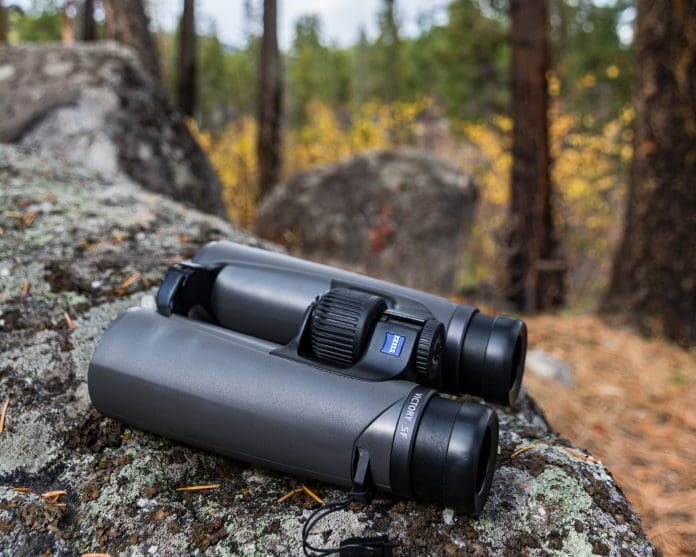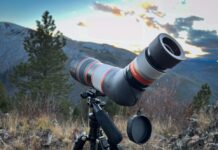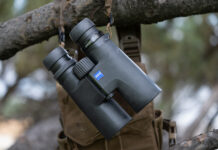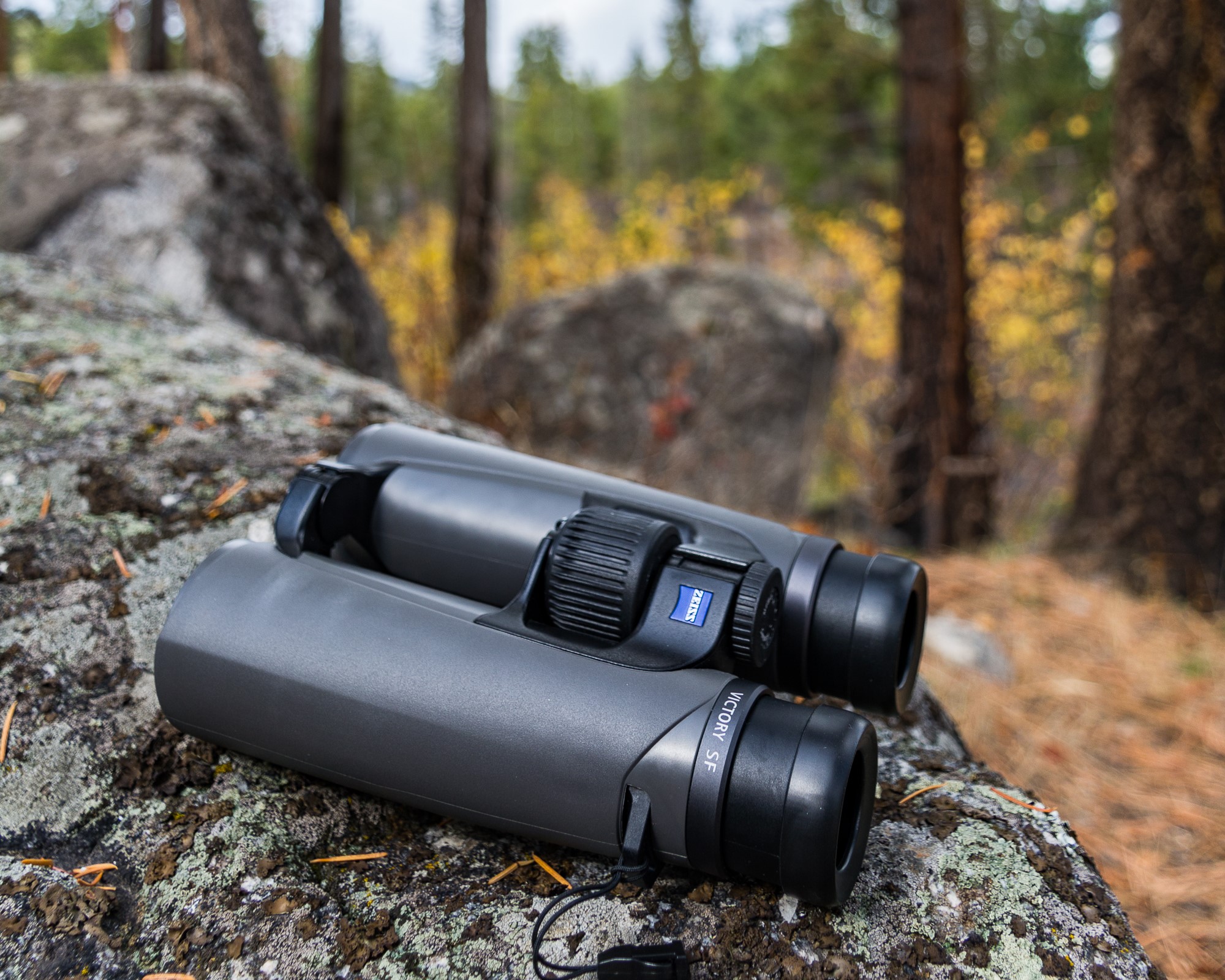
Zeiss Victory SF 10×42
by Matt Cashell, Rokslide Staff
If there is a classic configuration of western hunting binoculars, it has to be the 10×42. This combination offers an acceptable exit pupil (4.2mm) for low light viewing while affording moderately high magnification for detailed observation. It is also a nice balance of hand-hold-ability versus tripod-usefulness. Most hunters can get sufficiently steady with just their hands or improvised support (elbows on knees, grasping baseball cap bill, etc.) to resolve a sharp image. Yet, 10x is made all the more useful on a tripod, where a high-performing binocular truly shines.
It is no wonder that there are more 10X42 binoculars bouncing around the woods and plains of the Western US than any other configuration. In testing gear for Rokslide, I have had the opportunity to test many of the top manufacturers’ offerings in this configuration, and the competition is fierce.
While companies like Vortex, Meopta, and others have garnered a strong following by putting out high performing 10x42s at moderate prices, the top of market is still dominated by flagship models from Swarovski, Zeiss, and Leica—”The Big Three.”
Rokslide’s friends at 1 SHOT GEAR carry the flagship models from all of “The Big Three.” 1 SHOT GEAR was kind enough to lend out a copy of the newest, top-of-the-line Zeiss binocular for evaluation, the Zeiss Victory SF in 10×42.
Construction:
Picking up the Zeiss SF for the first time is surprising. This binocular felt remarkably light for a 10×42. The scale said 27.8 ounces. Not as light as it felt, but still more than a 1/4 pound savings over my reference standard Meopta Meostar HD 10×42 at 32 ounces. While it was lighter, it was certainly longer than the Meopta, contrasting the Meopta’s squat and compact form with a long and slender body. This length accommodates an open-bridge design, pioneered by competitor Swarovski’s EL line. However, Zeiss squeezes in three bridges versus the EL’s two, placing the third bridge between the focus knob and the locking diopter adjustment knob by the eyepieces.
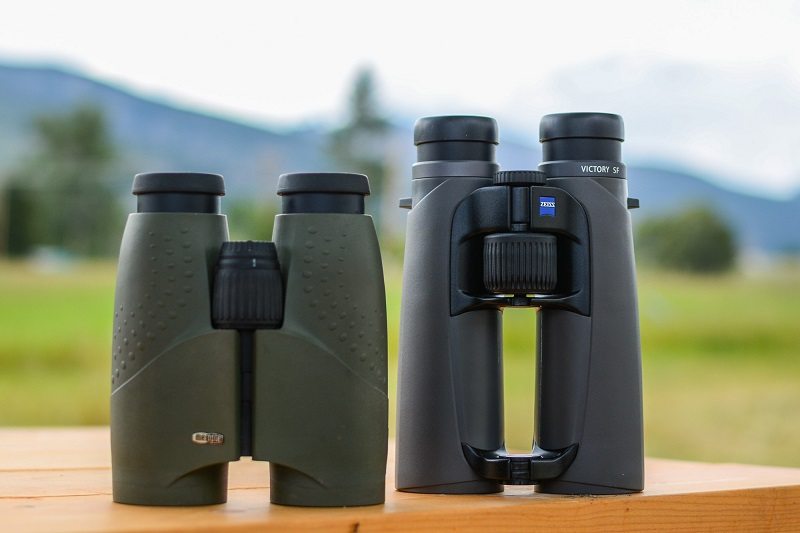
The long and slender Zeiss SF stands tall over the squatty Meostar HD, yet weighs noticably less
The rubber, ribbed focus knob required a very light touch. This worked okay with the slow focus speed of the knob, and I could find precise focus intuitively, but I generally prefer a little more resistance, especially with gloves, as this can prevent turning past critical focus. The rubber armoring was smoother than most offerings in this category, and I didn’t feel like it offered the same confidence in grip as rougher armor. The long eye relief eyecups offer two semi-locking positions besides the fully-collapsed position, so the viewer can choose a preferred eye relief distance. The eyecups unscrew fully for cleaning or replacement, which I like a lot. However, the eyecup assembly is fully constructed of light plastics that bend easily in hand. It does not feel as confidence-inspiring as the Meopta’s sturdier plastic parts that require close examination to tell they aren’t metal. I was concerned about cross threading the Zeiss eyecups during reassembly.
As I have often mentioned in binocular reviews, one feature I love in a binocular is a 1/4″ threaded socket in the bridge for accepting adapters for tripod mounting. The Zeiss lacks this completely, although Zeiss markets a ridiculously expensive, bulky, and awkward “Binofix” tripod adapter. In spite of being really light, the magnesium frame of the SF seemed quite sturdily built, however. Zeiss put their excellent hydrophobic “Lotutec” coatings on the exterior lens surfaces which assists with keeping water droplets off the lens, and cleaning.
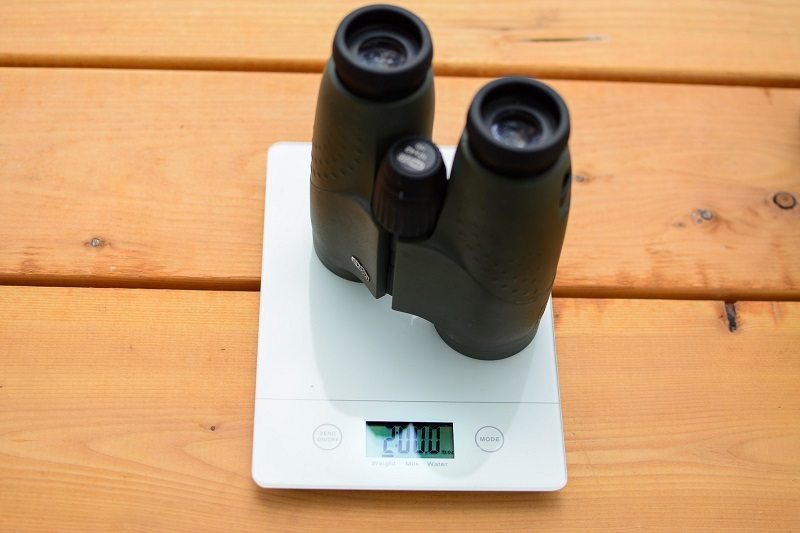
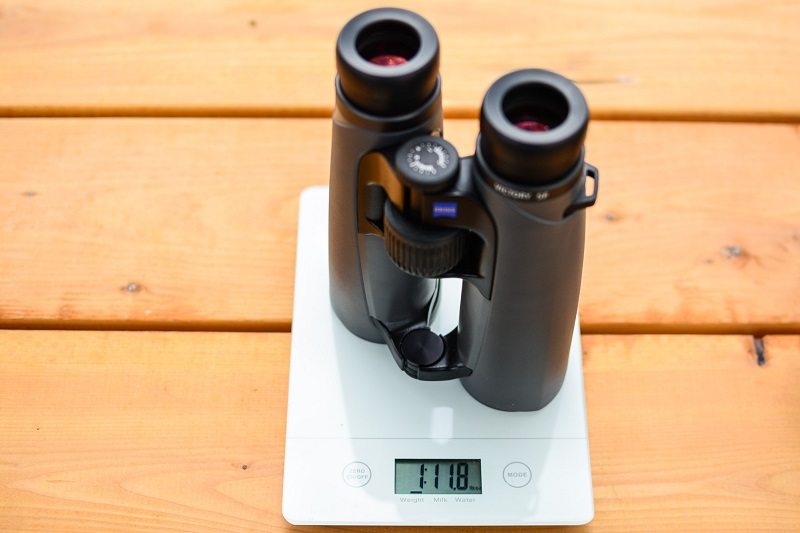
The Zeiss SF was over 1/4 pound lighter than the Meopta Meostar HD
The triple bridge design of the SF was well executed. It fit my hand well, and placed my index finger right over the focus wheel naturally. The design inspired confident one-handed glassing in the field, especially when combined with the light weight. The design allows for glassing checks while my other hand was occupied with a bow.
A binocular retailing for $2900 (although 1 SHOT Gear offers it at under $2650 as of press time) should have a pretty robust accessory package. Here Zeiss offers a mixed bag. On one hand, they supply a nice, form-fitting Cordura case, and well-cushioned, Zeiss branded neck strap. On the other hand, the rain guard seems cheap flimsy and disposable and the objective cover isn’t any better with a single quick-release tether that leaves the the cover dancing in the wind under the binocular like some sort of possessed puppet.
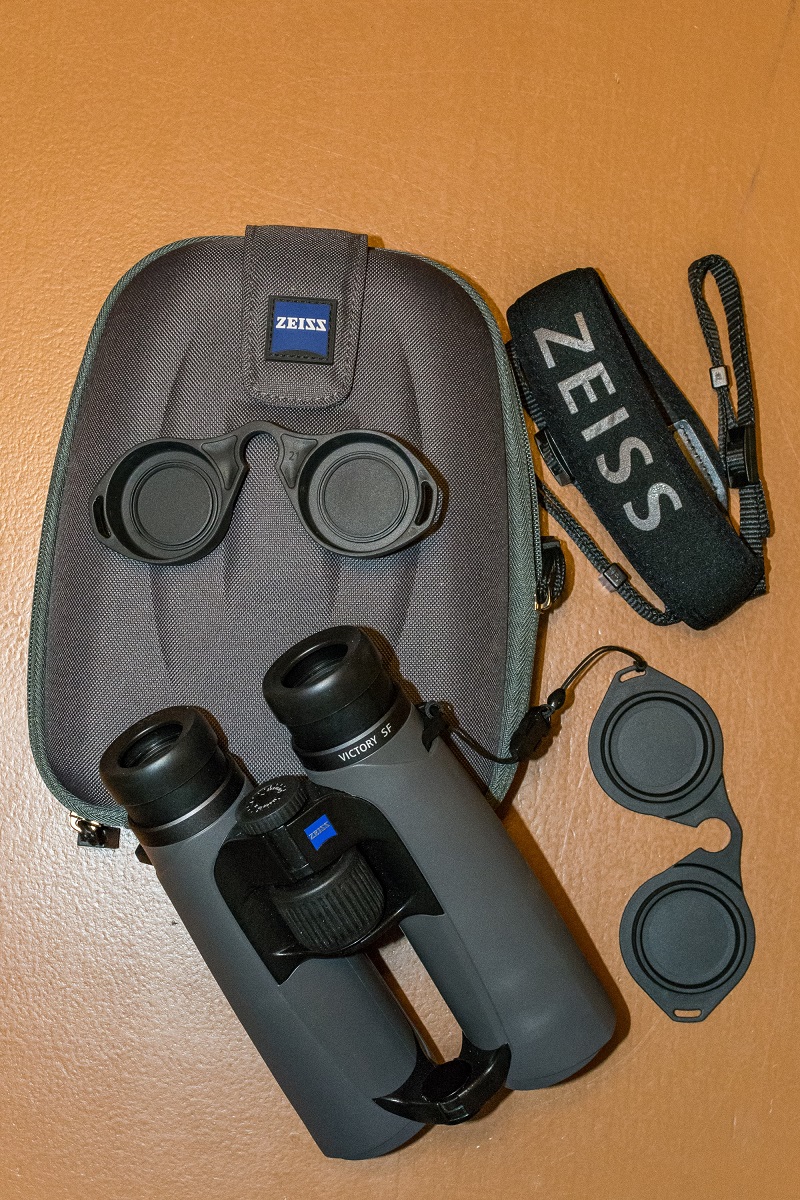
Zeiss ships a mixed bag of accessories with the SF
Optical Performance:
Here is where the rubber meets the road for the super-premium binoculars. And here the SF doesn’t disappoint … mostly.
My trusty resolution chart showed what was expected: The Zeiss SF resolves the same element as any of the best 10x42s (including the Meopta), and a magnification booster would be needed to differentiate one from the other based on resolution alone. The Zeiss colors were quite neutral the center field, but maybe a hair cooler than the Meopta, with a blue bias at the very edge. In low-light testing, the SF was indeed a touch brighter than the Meopta and added perhaps a minute to usable glassing time while I observed whitetail deer feeding at dusk around 200 yards away.
A huge positive for the SF is the field of view. A 10X42 binocular field of view of around 300 feet at 1000 yards was once considered wide. The Meostar HD’s 330 feet at 1000 yards is now the “wide” standard. The SF’s ultra-wide 360 feet at 1000 yards is remarkable. The extra 30 feet at 1000 yards seems like much more than the specs. While glassing bedded deer, I could see additional deer bedded in the shadows to the side in the expansive field of view. The SF’s optical design includes a field-flattener in the eyepiece design. The goal here is total sharpness across the field, and Zeiss largely succeeds in providing very good edge sharpness, although carefully examining the resolution chart near the edge of the field shows a small amount of degradation.
So where is the niggle in the optics? For that we examine another parameter:
Aberration Correction:
While the field flattener included in the eyepiece design seems to assist edge sharpness notably in the SF, it does not eliminate distortion entirely. Pincushion distortion is visible at the edges, and likely was intentional to minimize the “rolling ball effect” some users see while panning low distortion optics. The distortion level is lower than a non-flattened design like the Meostar HD, but was still visible to me, unlike some other field-flattened designs. Furthermore, the distortion isn’t really progressive, as there is a “donut” of increased magnification just in from the edge that complicates the pincushion distortion, and I occasionally found the resulting complicated distortion a little distracting.
Zeiss touts the SF as utilizing German glass supplier Schott’s finest FL (flouride) glasses in the SF design to minimize chromatic aberration. This is supported in observation as the Zeiss has excellent control of color fringing in high contrast areas, and is similar to the very well-controlled Meopta in this area.
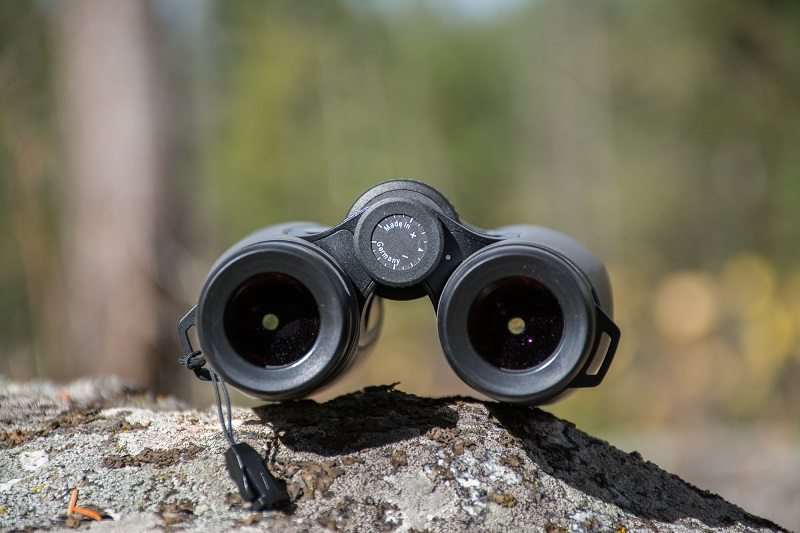
Conclusion:
So where does this leave hunters looking at the top of the market? As expected, the Zeiss SF performs near the very top optically. It performs well in low light and offers a remarkable wide field of view sharp to the very edge. Backpacking hunters will appreciate its very light weight for a full-size high performance binocular. The ergonomics of the long and thin triple bridge design are excellent.
However, all is not perfect with the SF. Like its competitors, the price is high compared to mid-level offerings. While the design seems to be aimed at birders, western hunters will find some frustration. The lack of easy tripod adapting limits versatility without the user resorting to cumbersome contraptions or custom modifications. The impressively wide field is limited by some complex and occasionally distracting distortion near the edge. Some of the accessories and build features are disappointing when coming with a top-shelf binocular.
Visit 1 Shot Gear here for this binocular and all their optic and gear offerings. Be sure and let them know you’re a Rokslide member for best possible pricing.
You can ask Matt questions or discuss this article here













